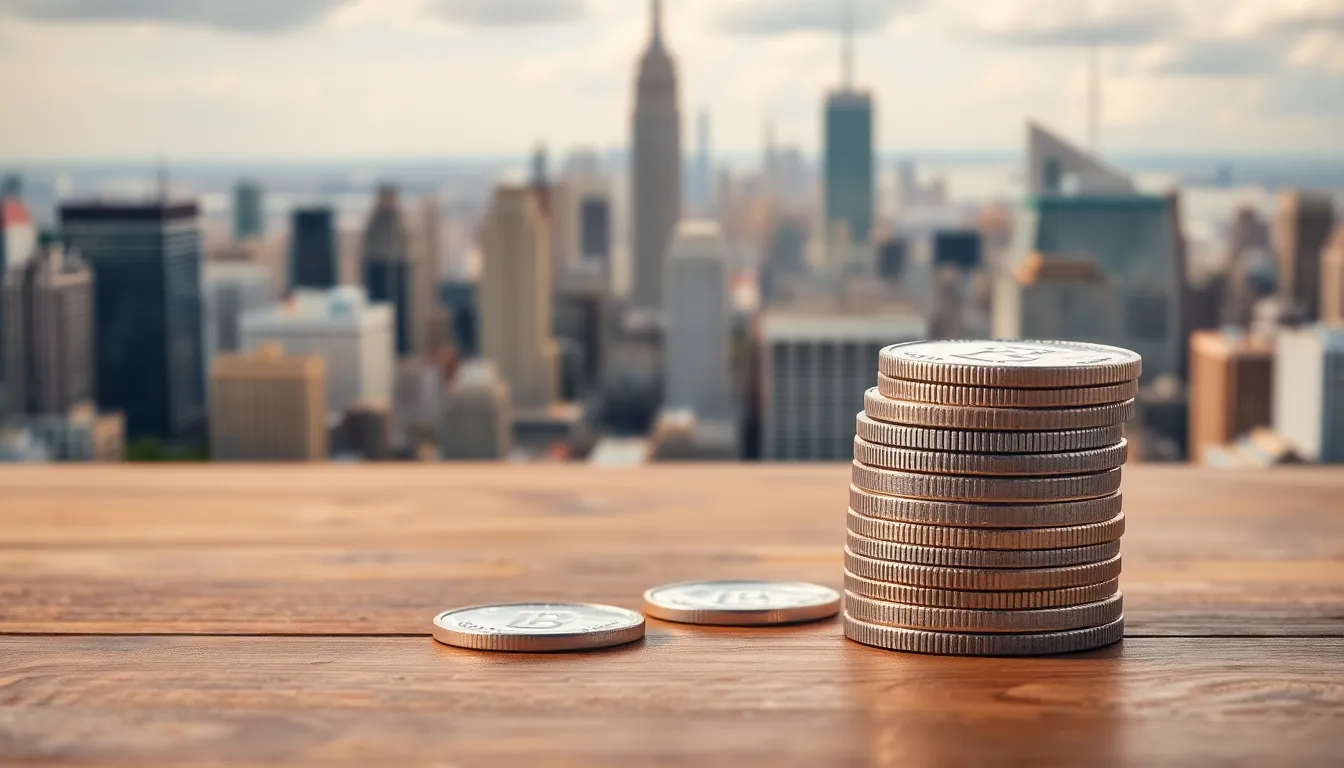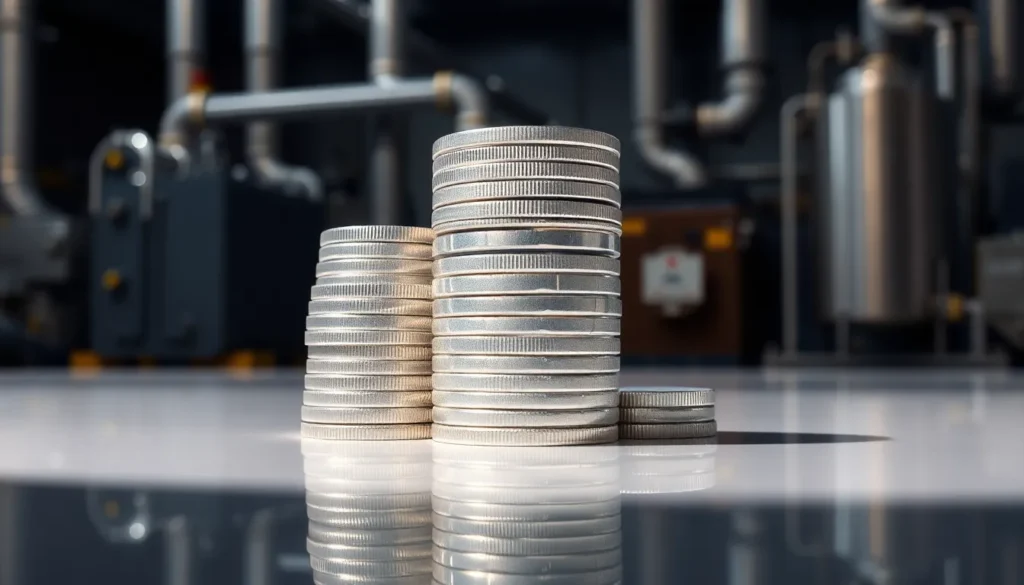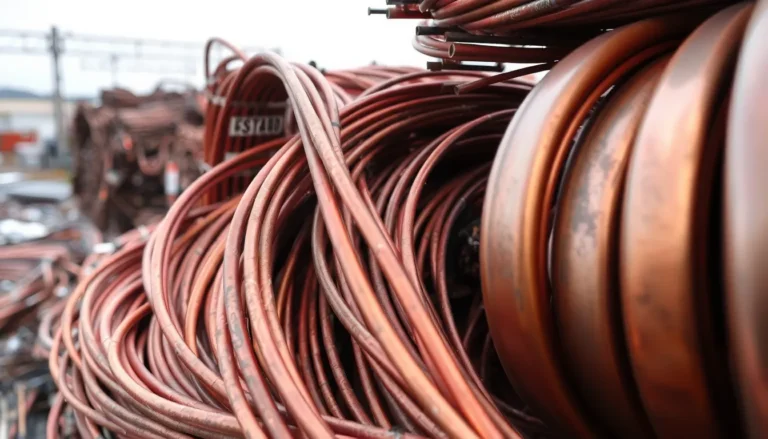Silver has long been the underdog of precious metals, often overshadowed by its flashy cousin gold. Yet, as the world shifts towards greener technologies and the demand for silver in electronics skyrockets, it’s time to pay attention. Investors are now asking: is silver the hidden gem waiting to shine?
With predictions swirling around the future price of silver, it’s like trying to read tea leaves—only the tea’s made of metal. Whether you’re a seasoned investor or just curious about the shiny stuff, understanding the factors influencing silver prices can make all the difference. Buckle up as we delve into the crystal ball of silver price predictions and explore what the future might hold for this lustrous metal.
Table of Contents
ToggleFuture Silver Price Predictions Overview
Market analysts project various scenarios for future silver prices, driven by an array of factors. Increased interest in renewable energy can lead to higher demand for silver, as it plays a crucial role in solar panels and batteries. Economic indicators also affect silver pricing; for instance, inflation tends to drive investors toward precious metals as a safeguard.
Global economic stability holds significance; uncertainties often lead to spikes in silver demand. Increased industrial applications might support a sustained rise in silver prices, especially from sectors focusing on green technology. Investor behavior impacts market dynamics; a notable shift toward physical silver investments may elevate price levels.
Some forecasts predict silver reaching $25 to $30 per ounce over the next few years, influenced by industrial demand and geopolitical factors. Historical trends show that silver typically performs well during economic downturns, suggesting potential upward movement in challenging times.
Supply constraints can also lead to price increases. Production challenges, especially from major mining countries, could result in tighter supply lines.
Interest from institutional investors could offer additional support for silver prices. If significant capital flows into silver-backed ETFs and other investment vehicles, higher prices may follow.
Predictions rely on a blend of technical analysis and fundamentals. Various experts warn that volatility is inherent in commodity markets. Understanding these influences aids in making informed investment decisions regarding silver.
Key Factors Influencing Silver Prices

Several factors impact silver prices, reflecting its role as both a precious metal and an industrial commodity. Understanding these influences aids in making informed investment decisions.
Economic Indicators
Economic indicators play a crucial role in determining silver prices. Inflation consistently drives investor interest toward precious metals for protection. When uncertainties arise, including geopolitical tensions or economic downturns, demand for silver often increases. Interest rates significantly affect this dynamic; lower interest rates enhance silver’s appeal, as they reduce the opportunity cost of holding non-yielding assets. Additionally, positive market performance can lead to increased buying activity among investors looking to hedge against potential risks.
Market Demand and Supply
Market demand and supply dynamics significantly influence silver pricing. Growing demand from renewable energy sectors, particularly in solar panels and batteries, impacts overall consumption levels. Increased usage in electronics also propels industrial demand. Supply constraints can further affect prices, with major mining countries experiencing production challenges that limit available silver. Institutional investors entering the market can amplify these effects, driving prices upward as they diversify portfolios. Tracking these trends helps anticipate potential price movements in the silver market.
Historical Price Trends
Historical price trends offer insight into silver’s behavior as a precious metal. Significant fluctuations in silver prices occurred over the last few decades, influenced by various factors such as economic conditions and industrial demand.
Analysis of Past Performance
Silver’s price reached a peak of approximately $49 per ounce in April 2011, driven by economic uncertainty and heightened investment interest. Following this surge, prices fell significantly, stabilizing around $14 to $15 per ounce by late 2015. The 2020 pandemic triggered renewed interest, with prices climbing back to over $27 per ounce by mid-2020 due to increased demand for safe-haven assets. Notably, during economic downturns, silver tends to demonstrate resilience, often rising as investors seek protection from market volatility.
Lessons from Historical Data
Historical data reveals the cyclical nature of silver’s price movements. Investors observed that prices often increase significantly during times of economic stress, indicating a potential flight to safety. Additionally, historical trends indicate the impact of industrial demand, particularly from sectors like renewable energy and electronics, on price stability. These patterns emphasize the importance of considering both economic indicators and market conditions. Thus, understanding silver’s past performance helps investors anticipate future trends and make informed decisions.
Expert Opinions and Forecasts
Market experts share valuable insights on the future of silver prices, drawing attention to ongoing trends.
Insights from Industry Analysts
Analysts note an intensifying demand for silver, especially in the renewable energy sector. Increased adoption of solar panels and battery technology drives this trend. Economic indicators emphasize that inflation often results in higher silver prices as investors seek protection. Analysts point out geopolitical tensions can also elevate interest in precious metals. Current forecasts predict silver’s price range between $25 and $30 per ounce, starting from recent data. Historical trends reflect that silver often gains value during economic uncertainty, highlighting its necessity as a safe-haven asset.
Predictions from Market Specialists
Market specialists expect silver to outperform other precious metals in the coming years. Factors influencing this include supply chain disruptions and growing industrial consumption. Institutional investors are entering the silver market, further propelling prices upward. Analysts emphasize that lower interest rates attract investors to silver, reducing opportunity costs. Speculated events, like shifts in global policy and trade conditions, could also contribute to price fluctuations. The consensus suggests that sustained growth in demand from electronics and green technologies supports a bullish outlook for silver.
Potential Risks and Opportunities
Potential risks related to silver prices often stem from market volatility and external economic factors. As geopolitical tensions rise or global economic conditions fluctuate, silver may experience sudden price changes. Institutional interest in silver can create both opportunities and risks, depending on investor behavior and market sentiment.
Supply disruptions in major mining countries pose another risk. Countries heavily dependent on silver production may face labor strikes, regulatory changes, or environmental concerns affecting output. Such occurrences can create short-term volatility in prices, impacting long-term investment strategies.
Opportunities primarily arise from increased industrial demand, especially in renewable energy sectors. Growing adoption of solar panels and electric vehicle batteries significantly enhances consumption of silver. As industries transition to more sustainable technologies, silver’s role becomes increasingly critical, driving demand.
Another opportunity lies in inflation dynamics. Investors often turn to silver as a shield against inflationary pressures, usually leading to price increases. Historically, silver has maintained value during economic uncertainty, presenting a favorable scenario for potential investors during downturns.
Market forecasts indicate a potential price range of $25 to $30 per ounce, suggesting bullish sentiments in the near future. Analysts expect increasing adoption of advanced technologies that utilize silver, which might sustain upward price trends. By recognizing both risks and opportunities, investors can navigate the silver market more effectively, aligning their strategies with ongoing technological and economic shifts.
The future of silver pricing holds promise as various factors converge to shape its trajectory. Increased industrial demand particularly in renewable energy sectors is likely to play a pivotal role in driving prices upward. Investors should remain vigilant about economic indicators and geopolitical tensions that can influence market dynamics.
With predictions suggesting silver could reach $25 to $30 per ounce in the coming years, the metal’s potential as a valuable investment is becoming clearer. As the landscape of technology and economics continues to evolve, silver’s significance in both portfolios and industries will likely only grow. Embracing this often-overlooked asset could yield substantial benefits for those ready to seize the opportunity.




